The Texas Heeler is a cross between an Australian Cattle Dog and the Australian Shepherd.
Outside of its home state of Texas, it is a very uncommon breed.
It is a natural farm dog with an instinctive love for a hard day’s work.
These dogs are called Heelers for a reason: they will stay by your side no matter what. If you are seeking a loyal friend to look after your home, these dogs are a great fit for you.
TABLE OF CONTENTS
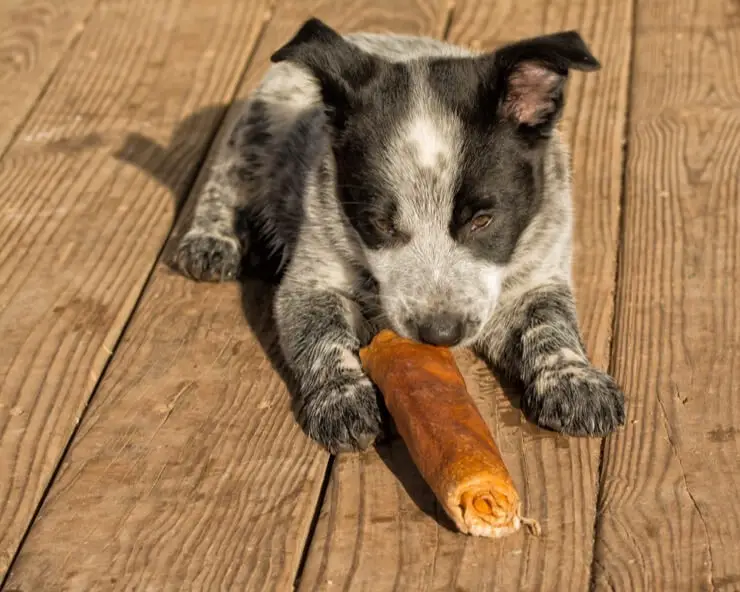
From Adobe Stock
What is a Texas Heeler?
To make a Texas Heeler, an Australian Cattle Dog is bred with an Australian Shepherd. Although this breed is a mix, its lineage classifies it as a herding dog.
Coming from the state of Texas, this dog was bred to help farmers and ranchers tend their livestock. Off of the farm, they are used today as guard dogs and service dogs.
They take after the Cattle Dog in many ways, including build and general appearance.
This highly intelligent breed is ready and willing to help out. They are at their best and happiest when they are given a job to do.
A Texas Heeler is easier to train and care for than other working dogs. They will fit into any kind of family that can keep them active and working hard.
- Overview: Hybrid.
- Purpose: Herding.
- Weight: 25-50 pounds.
- Size: 17-22 inches.
- Temperament: Eager, hardworking and helpful.
Texas Heeler Appearance
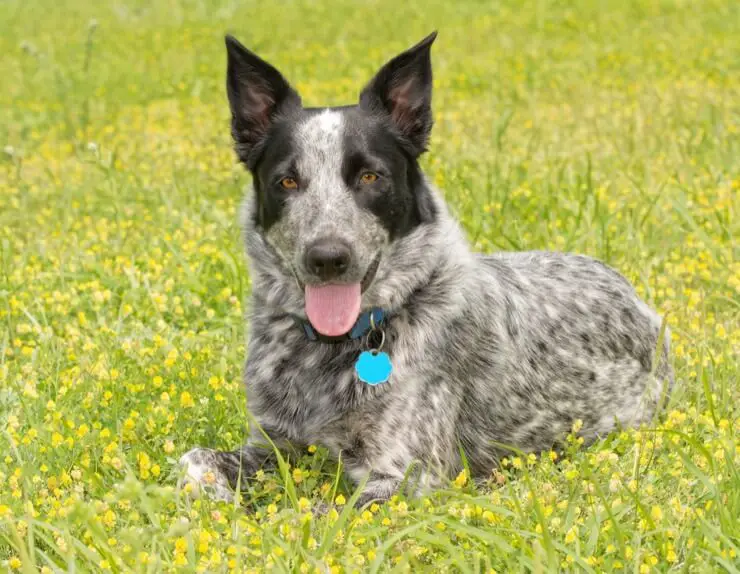
From Adobe Stock
Whilst there is no true breed standard, Heelers have a few key characteristics.
The breed should have the build of an Australian Cattle Dog with the colors and facial structure of an Aussie Shepherd.
They must be muscular, but lean enough to carry out farm work efficiently. Their powerful legs are made for running across acres of farm land.
As puppies their ears will be lopped but will begin to point upward as they age.
Height and Weight
Both male and female Heelers stand between 17 and 22 inches tall, and can weigh anywhere from 25 to 50 pounds.
Colors and Coat
This breed’s many colors are its most notable characteristic.
The black and brown colors of their parent breeds appear in a patchy or mottled pattern, with speckles across their face and muzzle.
They can even inherit the blue merle pattern that Australian Shepherds are known for.
Your puppy’s color will be luck of the draw, but may be more predictable with careful attention to genetic inheritance.
Texas Heelers typically have a short, smooth single coat with thick fur. Sometimes they inherit the longer fur of the Australian Shepherd. Shedding is very light and brushing is needed only once a week. Shedding may increase during the spring and fall but it is never more than a moderate amount.
4 Fun Facts About Texas Heelers
- These born athletes dominate agility and jumping competitions and can compete in any sporting events that accept hybrid dogs.
- The breed has a drop of wild blood from the Australian dingo, as the first Australian Cattle Dogs originated from dingo crossbreeds.
- Both Texas Heelers and Australian Shepherds originated in the American southwest. While one lives up to its name, the other does not.
- The name Blue Heeler is often misattributed to the Texas Heeler. In reality Blue Heelers are grey colored Australian Cattle Dogs.
Texas Heeler Personality and Temperament
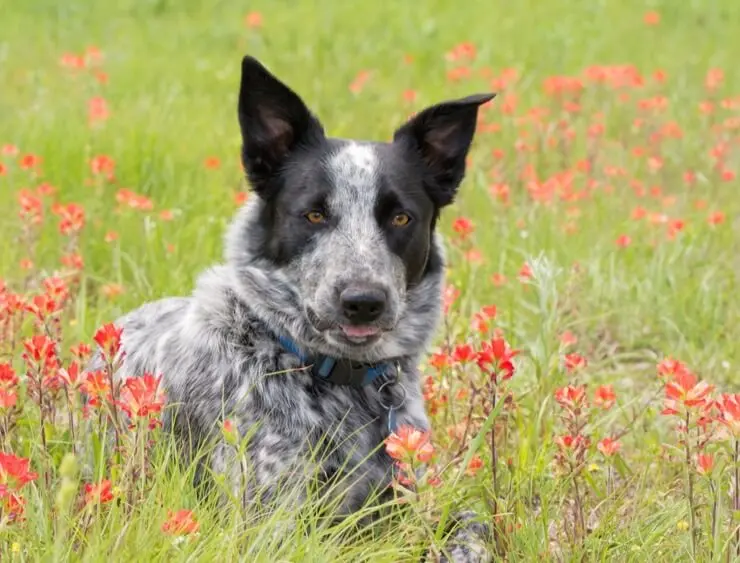
From Adobe Stock
One important thing to remember about Texas Heelers is that they are working dogs through and through.
Completing tasks is its primary focus every day.
These are not overly affectionate or cuddly dogs and you might find that yours is a bit aloof and standoffish when they do not have a job to do.
In the absence of real work they need something to keep them on their feet. They are very energetic and playful in a home environment. If you like to lounge on the couch this is not the best breed for you. They will appreciate an active owner to engage them in long days of work and play.
When engaged daily they will learn to respect you as their leader and your relationship will be based upon this mutual respect.
Compared to other working breeds they are very quiet and will only bark if something alarms them.
Friendliness does not come naturally to Heeler dogs so socialization can be a bit difficult.
Be very careful when introducing your dog to other animals including dogs – they have a tendency to see other pets as livestock that need to be herded.
Aggressive behavior is uncommon but not unheard of. As guardians of the household there may be times when they get a little too defensive.
Is The Texas Heeler A Good Family Dog?
This makes a great family dog for a one pet family. Their loyalty and desire to please will win your family’s heart in no time at all.
Just like their distant dingo descendants they are very pack oriented. They will see each member of your family as a pack member to be respected.
Caring for a Texas Heeler
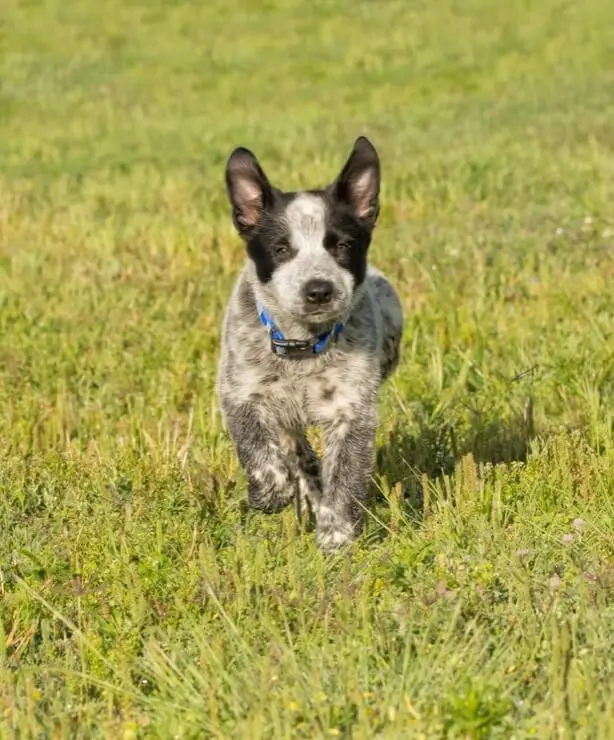
From Adobe Stock
Herding dogs are often very high maintenance breeds, but this one is surprisingly easy to care for.
This dog is ideal for first time working dog owners.
If you live in an area with lots of outdoor space, your pup will make a wonderful companion for all of your adventures.
They make great therapy animals for the elderly and disabled, but will also need somebody to take them out for daily long walks. They are so easy to manage because they are so willing to work with you.
If you keep them exercised and socialized you will have a very happy Heeler.
Exercise Requirements
Your pooch will need at least 90 minutes of exercise a day and a wide open space to tap into their wild side.
Remember these dogs are born to run across acres of farmland keeping up with sheep and cattle.
Keep them on a leash while out on a walk, or they might take off after people and other animals. They will also need time off leash in a fenced in area every day.
Running is this dog’s favorite way to stay in shape and they will enjoy going for a swim in the summertime.
While they may not be Retrievers they will still love to play fetch and retrieve a toy or stick.
- Number of Walks Per Day: 2+.
- Total Exercise Needed Per Day: At least 90 minutes.
Grooming and Shedding
These short coated dogs shed very lightly.
Even those with slightly longer coats will only need brushing once a week.
Dirt, fleas and ticks are more of a concern than shedding. Adventurous dogs tend to bring a little of the great outdoors back with them when they come inside, so check their fur for fleas and ticks after every daily adventure.
Fleas can be combed out and ticks can be carefully plucked with a tick twister.
As for nails, active Heelers will wear their nails down naturally as they run.
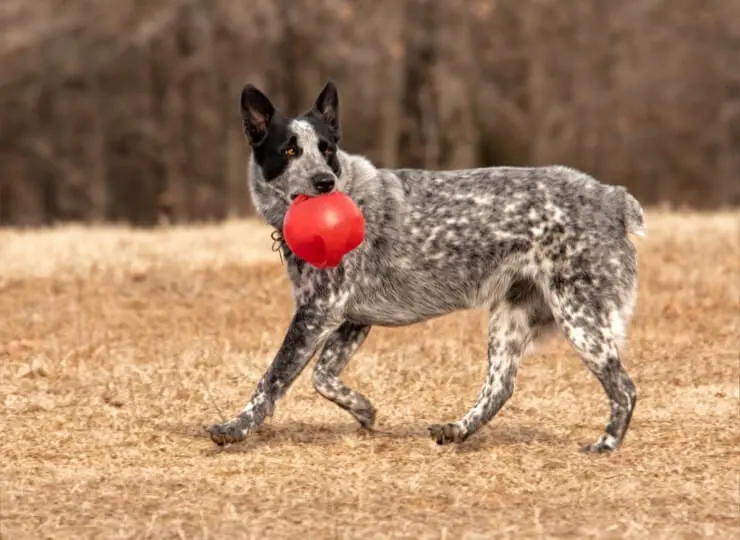
From Adobe Stock
Feeding and Diet
An active dog needs plenty of fuel.
High energy breeds benefit from a diet full of healthy fats and plenty of protein for muscle growth. Carbohydrates are necessary but should only be present in small amounts.
You can find specialized formula for working dog breeds.
Feed them daily at breakfast, lunch, and dinner with one cup of high quality kibble.
Texas Heelers used as outdoor dogs will weigh in at 25 to 35 pounds, with less active indoor dogs weighing up to 50 pounds.
| Calories Per Day: | Cups of Kibble Per Day: |
|---|---|
| 1200 | ~3 |
Known Health Problems
The two main health problems for this breed are distichia and epilepsy.
- Distichia: A common eye problem inherited from the parent breeds. The condition causes extra hairs to grow along the eyelid margin and can cause irritation or ulcers by rubbing against the cornea. Corrective surgery may be needed in severe cases.
- Epilepsy: Dogs can suffer from epilepsy just like humans can. An epileptic dog’s first seizure usually occurs between 1-5 years of age. They will need lifelong medical care to manage their condition.ž
With a little planning ahead you could get reimbursed for every vet bill from now on!
How Long Does A Texas Heeler Live?
This particularly Heeler can live for 13 to 15 years.
How Much Does A Texas Heeler Cost?
You can get a Texas Heeler for $300, and are most likely to find a good breeder in the breed’s home state (Texas).
How To Train Heelers
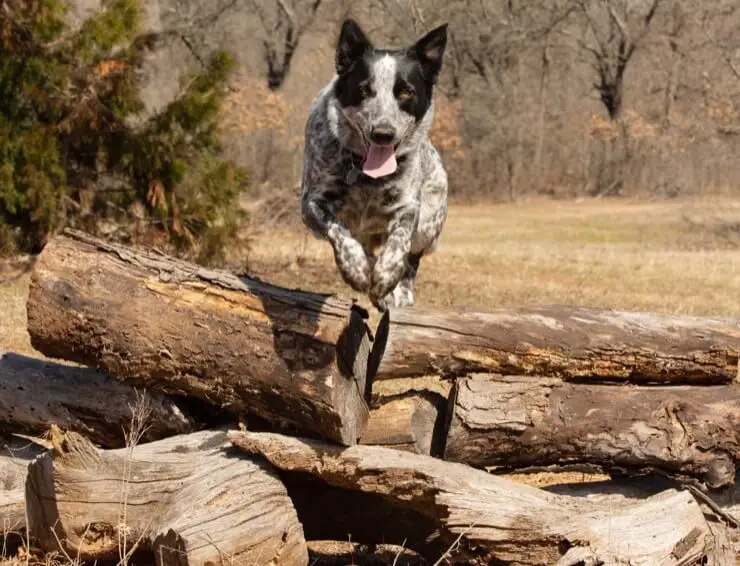
From Adobe Stock
Since they are so intelligent they do not have many problems when it comes to dog training.
They are at their best and brightest when completing tasks, you can treat training as a series of jobs to be done.
Their high intelligence and workaholic personalities make for quick and easy training.
Whilst basic training should come with ease, socializing your pup can be challenging. They lack the natural friendliness that most dogs are known for. Socialize your dog in the neighborhood rather than sending them off to puppy class. Your dog will feel more comfortable by your side in a familiar environment.
Working dogs are used to having something to do for most of their day so keep them entertained with work around the house. Anything from learning new tricks to chasing and fetching toys can be seen as work.
You can tap into your pup’s chasing instinct with a fun game of tag. Giving your dog an outlet for chasing and herding makes them less likely to try it out on the neighborhood pets.
Your Heeler will need a safe fenced-in area for them to chase around until they are tired out.
Make sure to keep the game firm but fair and discourage charging and other rough play.
If you are planning to keep your Texas Heeler inside you need to create their own special space – this can be done with crate training.
Buyer’s Guide
| Pros | Cons |
| Intelligent and easy to train. | High energy and huge fitness requirements. |
| Can perform a variety of tasks. | May be aloof to strangers. |
| Loyal and protective of their home. | Can be difficult to socialize. |
| Safe for most families. | Very high prey drive. |
| Easily entertained and eager to please. | Not recommended for multiple pet homes. |
Quick Breed Summary Table
| Breed Characteristics | |
| Size: | 17-22 inches |
| Weight: | 25-50lb |
| Lifespan: | 13-15 years |
| Coat: | Short single coat |
| Color: | Black, grey, brown, and merle |
| Do They Shed: | Occasionally |
| Temperament: | Vigilant, eager, focused, loyal, and hardworking |
| Intelligence: | High |
| Socialization: | Does not get along naturally with people or other dogs |
| Destructive Behavior: | May behave destructively when under stimulated |
| People Skills: | Gets along with its family more than strangers |
| Good with Children: | Yes |
| Activity Levels: | Very High |
Summary
The Texas Heeler makes an excellent addition to an active family. It is suitable for all kinds of households, so long as there’s plenty of room to run around.
While they may not be the cuddliest dogs they will show their appreciation for you in a day’s hard work.
They want to be kept on their feet and they are always looking for something to do.
If you give them the right outlets for their energy and intelligence they will be very happy.
More Australian Cattle Dog and Australian Shepherd Mixes
Want an Australian Cattle Dog mix or Australian Shepherd mix but aren’t keen on the Texas Heeler? Check out these other hybrid dog breeds:


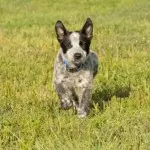
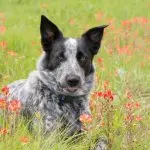
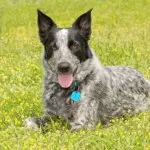
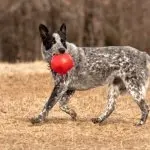
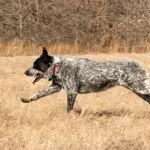
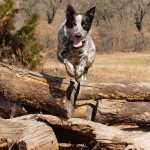
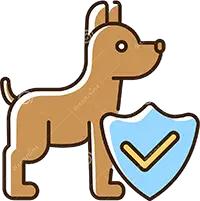

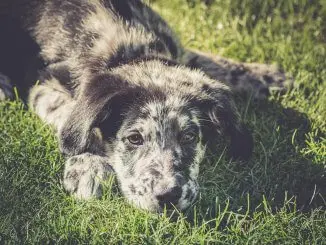
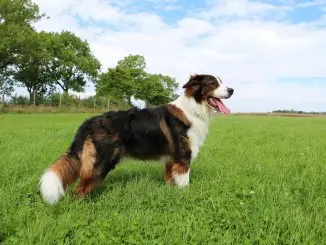
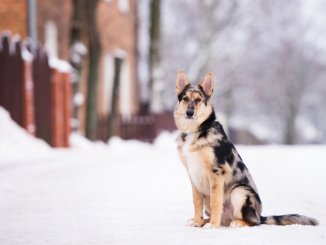
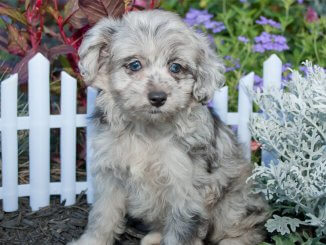
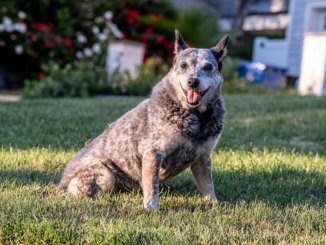
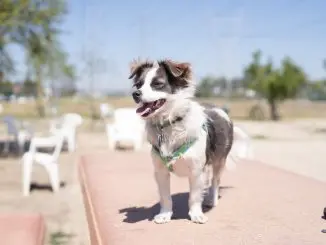
How do Texas heelers handle grass burrs? We have plenty of land and a sheep herd, but our sandy land is full of stickers. Our present herd dogs, pyrenees/anatolian, have lots of trouble with their feet.